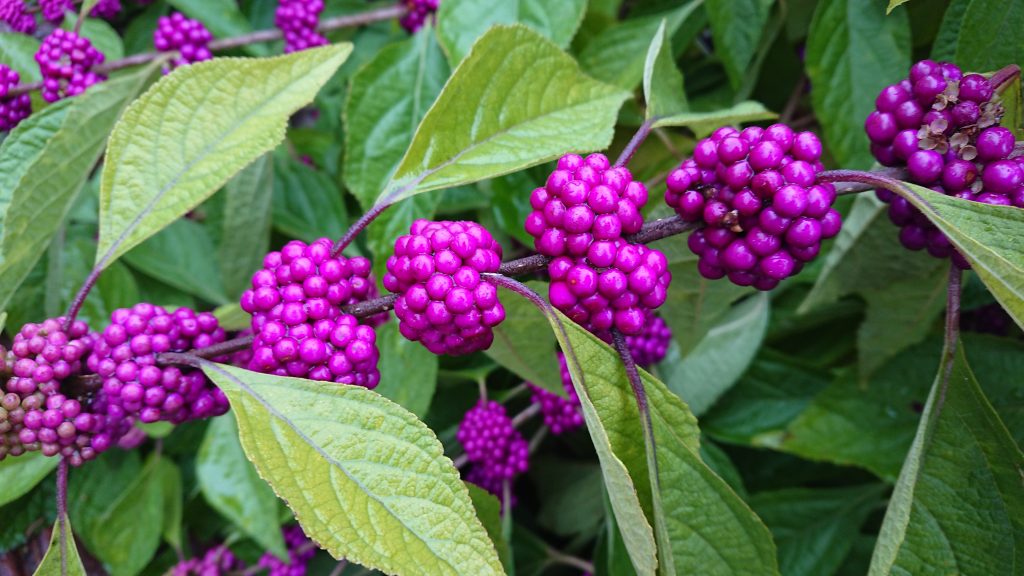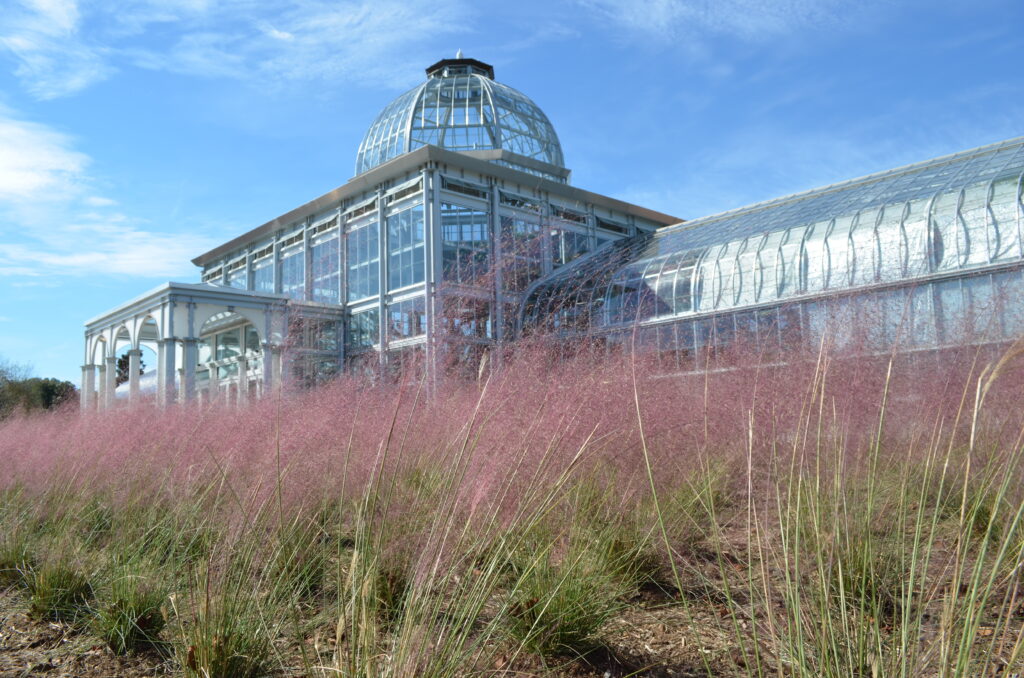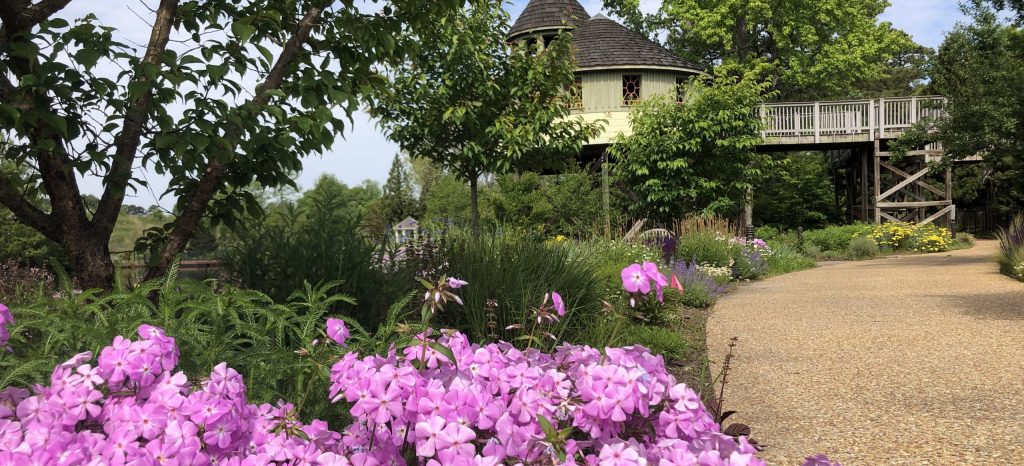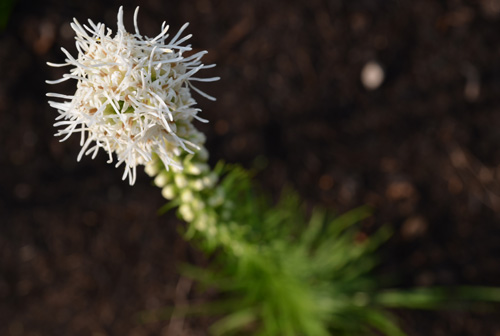Building Biodiversity
Landscaping in Layers
Nature loves a layer. She cements courses of sediment into solid stone. She laminates an annual succession of circles into living trees. She layers an onion in pungent iterations of itself, one inside the other. And, sandwiched between the strata of the earth and the envelope of its atmosphere, she has built layer upon layer of biodiversity.
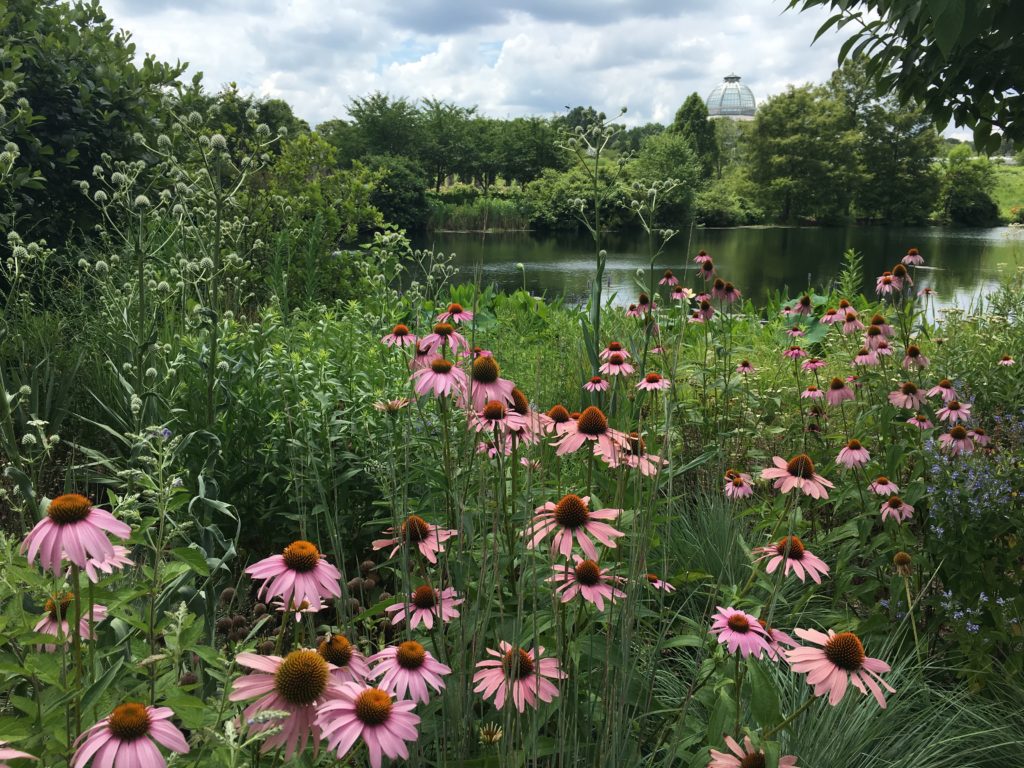
Native plants are thriving in the riparian buffer that surrounds Sydnor Lake. Landscaping in layers adds an additional benefit.
Building Biodiversity in Your Own Backyard
Landscape designer Trista Imrich encourages homeowners to build biodiversity in their own backyard by filling the landscape with layers of native plants, just as nature has. “A place for everything and everything in its place,” she says. Layered vegetation supports resident wildlife by meeting all of their environmental requirements: food, shelter, water and a place to rear their young. Each vegetative layer is host to its own unique community of organisms that thrives in an interdependent relationship with its habitat.
Imrich owns Wild Works of Wimsey, a Virginia Beach landscape design firm that specializes in creating landscapes with native plants. Speaking recently in the Grow Native webinar series, she described the five vegetative layers that she suggests homeowners fill with native plants to create low-maintenance landscapes that offer both visual interest and high habitat value:
- The uppermost layer of the landscape is called the canopy. There, the leafy crowns of mature trees photosynthesize rapidly in the full sun, making them powerhouses of vegetative productivity. They also protect lower levels of plant life from strong wind and storms. Imrich recommends planting canopy trees like River Birch (Betula nigra) and Pignut Hickory (Carya glabra) for their pollinator-hosting prowess, as well as White Oak (Quercus alba), which is host to over 500 species of caterpillars.
- Just below the canopy grows a layer of smaller, shade-tolerant trees like Redbud (Cercis canadensis) and Flowering Dogwood (Cornus florida), as well as seedlings and young saplings, collectively called the understory. Understory trees break bud and leaf out before their taller neighbors, thanks to the ample light that streams through the bare canopy in early spring. Imrich suggests planting native understory specialists like American Holly (Ilex opaca), Fringe Tree (Chionanthus virginicus), Serviceberry (Amelanchier arborea), Sweet Bay Magnolia (Magnolia virginiana), and Pagoda Dogwood (Cornus alternifolia).
- The middle-most layer of Imrich’s landscapes is populated with native shrubs like Mountain Laurel (Kalmia latifolia), American Beautyberry (Callicarpa americana), Oakleaf Hydrangea (Hydrangea quercifolia), Spicebush (Lindera benzoin), Winterberry (Ilex verticillata), Inkberry (Ilex glabra) and her favorite, Buttonbush (Cephalanthus occidentalis). These are woody plants whose multiple stems arise at or near the base of the plant, reaching a height of 3 to 15 feet. Whether deciduous or evergreen, flowering shrubs bring color and texture to warm-weather landscapes; in winter, their berries and dried flowerheads nourish a variety of wildlife.
- Herbaceous perennials like Blue Wood Aster (Symphyotrichum cordifolium), Phlox (Phlox glaberrima) , Joe Pye weed (Eutrochium dubium), and Spotted Beebalm (Monarda punctata) grow on non-woody stems, reaching their full height in their first year and flowering before they die back at the end of the season, reappearing in the spring. Imrich’s palette of herbaceous perennials also includes Sneezeweed (Helenium amarum), Little Bluestem (Schizachyrium scoparium), Columbine (Aquilegia), Butterfly Weed (Asclepias tuberosa), Pink Muhly grass (Muhlenbergia capillaris), Pennsylvania sedge (Carex pensylvanica), and Royal Fern (Osmunda regalis). She is partial to Blazing Star (Liatris spicata), which she uses as a “pink punctuation mark.”
- Imrich calls groundcover the most neglected layer. But a very important one. It’s a permanent replacement to the mulch that determined gardeners re-apply year after year. Groundcover retains moisture, reduces weed pressure and offers food and habitat for ground-nesting creatures. Imrich plants Green and Gold (Chrysogonum virginianum), Wild Strawberry (Fragaria virginiana), Coral Bells (Heuchera Americana) and Foamflower (Tiarella cordifolia) in the lowest layer of her native landscapes. According to the Xerces Society, the United States is home to over 20,000 native plants. Imrich recommends the organization’s online fact-sheet featuring “native plants that are highly attractive to pollinators and are well-suited for small-scale plantings in gardens and urban green spaces” in the Mid-Atlantic Region.
She suggests growing a combination of deciduous and evergreen trees, grouping smaller plants in drifts and arranging larger plants in odd numbers. “Vary the texture, height and color,” she says, and “space individual plants so that they touch each other when they reach their mature size.” The Xerces Society recommends incorporating between 12 and 20 species of blooming plants into a residential landscape. To ensure a continuous food supply for native wildlife, choose at least three different pollinator plants that flower in each of the three blooming periods: spring, summer, and fall.
I so enjoyed this class as part of the Grow Native Series offered by the Plant Virginia Natives partnership and Lewis Ginter Botanical Garden. Now that I know native plants help improve the environment for everyone, and how to turn my home garden into a hospitable habitat for birds and other wildlife, I’m inspired to get to work planting! If you are looking for a great selection of native plants here in Richmond, be sure to shop Spring PlantFest Plant Sale this Friday, April 30 and Saturday, May 1, 2021. The Garden’s plant sales are among the largest in the region with more than 40 vendors selling plants ranging from well-known favorites to rare exotics and other garden-related items.
Free admission to the sale. Masks required for those over age 5.
Friday, April 30, 9 a.m. – 5 p.m. and Saturday, May 1, 9 a.m. – 3 p.m.
